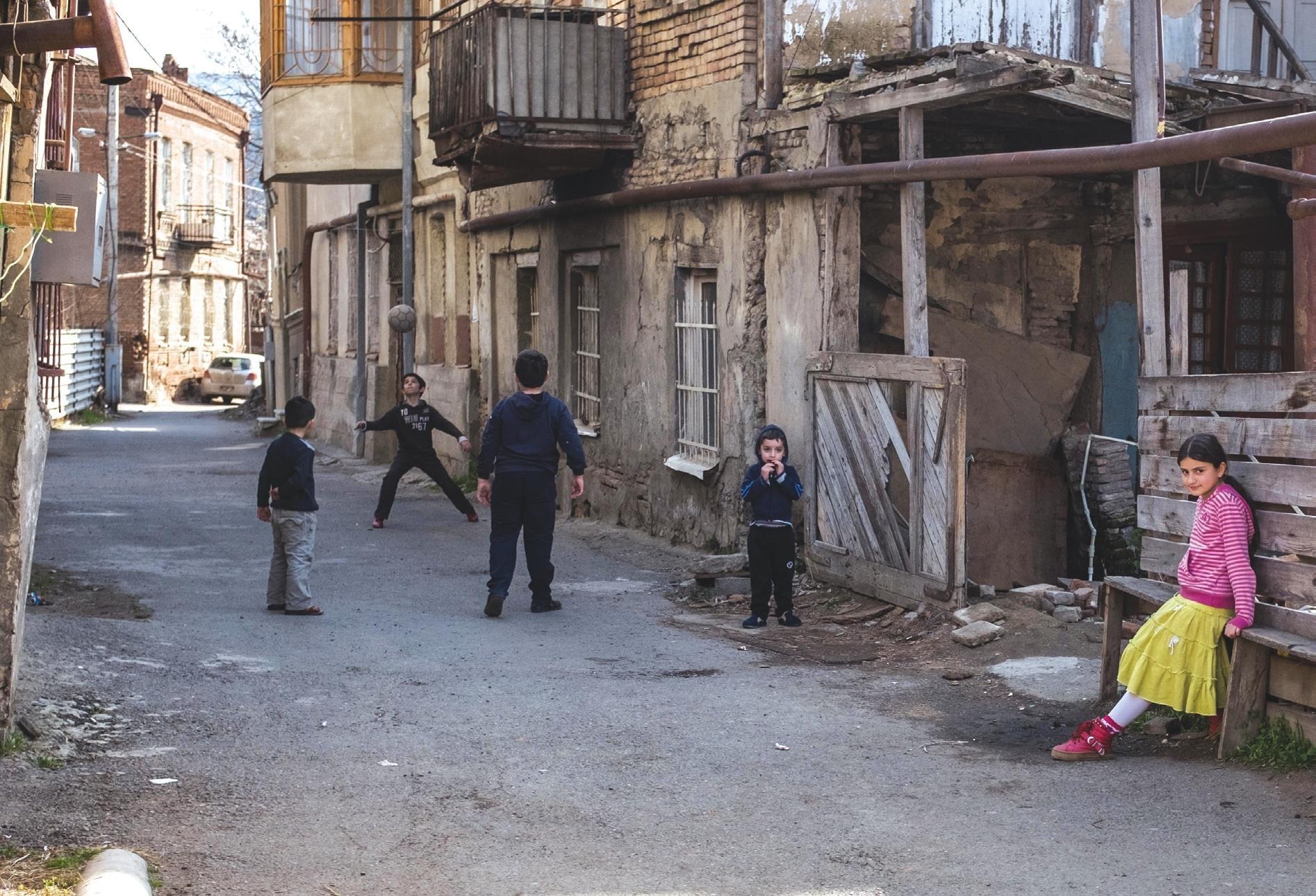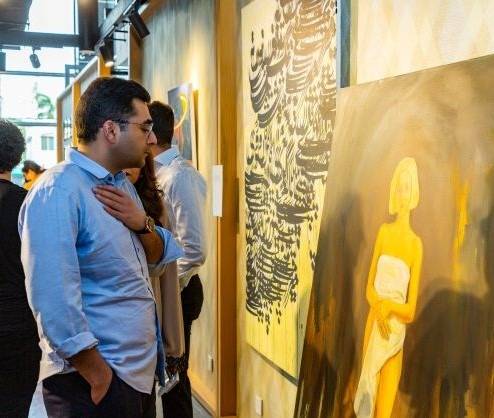
This article is a preview from the Autumn 2019 edition of New Humanist
There’s a powerful myth that surrounds football and nationalism. It holds that the world’s favourite game possesses an unequalled power to soothe the fratricidal impulse expressed when neighbours go to war. It probably began with the Christmas truce of 1914 in the mudbaths of the Western Front, and the fabled football matches that are said to have sprung up between British and German trenches. It survives today, most of all in discussion of the ethnic conflicts that accompanied the collapse of Communism in Europe.
Yet the claim fails under all but the gentlest interrogation. In May 1990, when a Yugoslavian First League match between Dinamo Zagreb and Red Star Belgrade descended into riots in which supporters were shot, stabbed and tear-gassed, it was widely considered to be the shot that set off the Serbo-Croatian war. In 2014, nearly a quarter of a century later, an international between Serbia and Albania in Belgrade – the first time an Albanian team had visited the city since the 1960s – was abandoned when local supporters stormed the pitch and attacked the visiting players; unfinished business from the 1998 war in Kosovo.
European football’s governing body, Uefa, has a list of international fixtures it says can never take place. Armenia against Azerbaijan, Spain against Gibraltar, Russia against Georgia, and Kosovo against both Serbia and Bosnia-Herzegovina – all blacklisted on account of the potential violence that a simple football match could trigger. History suggests nations use football to exaggerate their differences, not to bridge them.
* * *
The end of the Cold War left a trail of loose ends across Eastern Europe. Many newly independent republics suffered from separatist fighting, creating countries that remain fractured today. They are home to a complex relationship between nation-building and sport, which can play out in something as apparently simple as team names.
In the Georgian capital Tbilisi, a 23-year-old football coach named Davit Taktakishvili told me how the young players he coaches are the children of internally displaced persons (IDPs) from the separatist republic of Abkhazia, which seceded in 1993 after a bloody civil war.
“These are young people who have suffered unimaginably,” said Taktakishvili. “They’ve had tragic lives. They lost all their belongings, houses. Some of them lived with their families on the streets, constantly looking for shelter. The parents’ position is that, in playing football, their children must retain their Abkhazian identity [even though they left the break-away republic]. They were very emotional about that. They want to say to Abkhazia that you are still our brothers, to put aside the crimes of the war.”
Taktakishvili also coaches Dinamo Sukhumi, a team that bears the name of the Abkhazian regional capital. Exiled in Tbilisi, the team fights a proxy battle for the legacy of the famous club – also called Dinamo – that played at an elite level in the union-wide Soviet football league.
A team with the same name, but based in Abkhazia itself, invited their Georgian namesakes for a friendly match in 2012. Taktakishvili felt he had no choice but to decline. “It would be an insult to the memory of those that died fighting for a united Georgia,” he told me.
North of the border in Sukhumi itself, I met with the man responsible for the Abkhazian Dinamo, Astamur Adleiba. I asked his opinion of Taktakishvili’s club in Tbilisi, and their use of the Dinamo Sukhumi name. “Everybody likes nostalgia,” he says, sympathetically. “It’s natural, human. But we are the heirs of that team.”
Another Abkhazian city, Gagra, on the picturesque Black Sea coast, has had its name co-opted by a team in Tbilisi. The new club’s founder, Goridze Chikhradze, talks of being “ready to go to Gagra to rejoin with our Abkhaz friends who wish to cooperate and create something new with us”. But because of the political partition, he knows that outcome is all but impossible.
The Georgia-Abkhazia conflict is a microcosm of a situation that exists elsewhere. Georgia resolutely defends its claim to its borders. It is backed by the international community, which refuses to acknowledge Abkhazia or the republic’s other separatist enclave, South Ossetia. In the absence of a political resolution, communities on both sides of the improvised border use football to prop up
nationalist fictions.
A few hundred miles east across the Caucasus Mountains, the Azerbaijani club FK Qarabag play as exiles in the country’s capital, Baku. The club fled from fighting in the disputed Nagorno-Karabakh region in 1993, and has since been lavished with riches by patriotic business figures.
The club’s press attaché, Nurlan Ibrahimov, told me that the team represents the hope in Baku that, one day, the country might recover its dominion over the Karabakh region from its belligerent neighbour, Armenia. “This club means everything to the people of Azerbaijan,” he explains. “Our lands are being occupied. It’s through football success with Qarabag that we bring that to the attention of the world.”
* * *
Whilst Azerbaijan sees its state fissured, the people of the Nagorno-Karabakh region, a de facto independent state with an Armenian majority, use football to try and build theirs. Slava Gabrielyan used to coach the nascent national football team in the unrecognised republic, which is known to locals as Artsakh. He talks of football as a key part of building national consciousness in the region. “Because people in Karabakh didn’t want to be a part of Azerbaijan, they were killed,” he said, of the 1988-94 war. “As Armenians and as football players, we understood that this was our homeland. We didn’t want to be an Azerbaijan team.”
In June, Karabakh played host to a championship for national teams who are excluded from Fifa’s World Cup and other international competitions. The Azerbaijan football authorities responded with an open letter to the tournament’s organisers, claiming that the competition was: “A provocative action [that] not only promotes the illegal regime but also stimulates the manifestation of separatism and irredentism in the region destroyed by the Armenian occupation.”
A similar competition took place in Abkhazia in 2016. Then, 11,000 people packed into the Dinamo Stadium in Sukhumi to see the hosts beat a team representing the Punjab region of India and Pakistan to be crowned world champions. The tournament gave the republic foreign media attention, the first time it had featured in widespread international news since the 1993 war with Georgia that claimed 6,000 lives.
In the Balkans, where violence in Zagreb between fans of Dinamo and Red Star had lit the touch paper for the Yugoslav wars of seccession, football has never stopped being used as a means of aiding – and sabotaging – nation-building. In the 1990s, when the Albanian majority in the tiny Serb-controlled province of Kosovo fought against punitive government oppression, the state responded by outlawing football amongst Albanian communities. Still, a rudimentary football league survived, though under the constant threat of violent disruption by local Serb militia.
Edmond Rugova, an ethnic Albanian, played for Kosovo’s top club, FC Pristina, in the 80s, before leaving the region to move to the USA. During the years of Serb repression, he would return home to watch his former teammate, Josef Tortoshi, play for the club. “There was more than one occasion when games were interrupted by Serbian police,” Rugova told me. “We would see Tortoshi carried off, still wearing his kit and boots. Then a few hours later, he would walk out of the police station, beaten and bruised.”
Kosovo unilaterally declared independence from Serbia in 2008, but it took a further eight years before the republic was accepted by Uefa, European football’s governing body. Serbia continues to dispute its neighbour’s right to membership, as it claims Kosovo is an indisputable part of its own territory and, crucially, its national myth.
* * *
Only in the former Soviet republic of Moldova has the unifying power of football overpowered the spectre of separatism. There, a country divided by armed conflict and political partition has found common ground through sport. The largely Russian and Ukrainian-speaking east of the country separated from ethnically Romanian Moldova in 1990, formalising their secession via a four-month war two years later. The de facto republic known as Transnistria survives via financial and military aid from Moscow, its resistance to the Moldovan capital, Chisinau, the central fact of its existence.
The president of Moldova’s football federation, Pavel Cebanu, told me that uniting the two banks of the country’s River Dniester – the natural frontier that marks Transnistria’s border – has been the greatest victory of his time in office. “Despite the fact Transnistria has separated from Moldova, we have a common championship of the whole territory,” said Cebanu. “There were provocations back in the 1990s. There were attempts to stop us from organising football activity between the two.”
Around 600 people were killed in the Transnistrian war of independence. A vicious war of words has been waged across the Dniester ever since, with Moldovan leaders accusing their neighbours of directing an illegal global weapons trade. Yet in 2003, differences were overlooked to allow the Moldovan national team to play a European Championship qualifying game in the Transnistrian capital, Tiraspol. A full house of mostly local supporters roared the team on. “Our colleagues at Uefa and Fifa look at us with surprise,” said Cebanu. “Our situation is not like other regions in Europe like Armenia and Azerbaijan and Georgia. We are one football family.”

